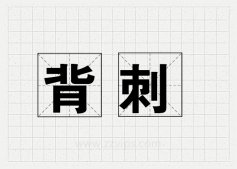一、引言
在移动应用程序的架构设计中,界面与数据即不可分割又不可混淆。在绝大部分的开发经历中,我们都是使用Fragment来进行界面编程,即使保存数据基本上也只是界面相关控件的数据,很少做其他的数据保存,毕竟这样与开发原则相背,而今天这一篇博客就要来介绍一下Fragment的另类用法,只是用来保存数据而没有任何界面元素。
二、实现背景
对于Fragment的数据保存方法,不难想到还是与setRetainInstance有关系的。这样一来所处的背景也是在屏幕旋转或其他配置改变时需要用到。无论在开发中我们的界面是用Activity还是Fragment生成的,在屏幕发生旋转时,都会在生命周期onSaveInstanceState中做控件状态和必要数据的缓存工作。通常情况下,会用到Bundle来存储数据。如Bundle的官方介绍所说,Bundle是一个用来存储String及其他序列化数据类型的map。同样Android中也存在着这样的一个异常:http://developer.android.com/intl/zh-cn/reference/android/os/TransactionTooLargeException.html
这个异常从字面上看不难理解,是传输数据过大异常。在描述中可知,现行Android系统中对于应用程序的传输数据大小限制在1Mb以内。所以如果在屏幕旋转过程中使用Bundle缓存大数据并不是十分安全的。这样的大数据在Android中很经典的代表之一就是Bitmap,即使Bitmap已经是序列化数据,能够方便的使用Bundle作为缓存媒介,但是笔者还是强烈不建议这样做。下边,就提供一个简单的解决途径。
三、实现过程
首先,创建一个用来保存数据的Fragment:
|
1
2
3
4
5
6
7
8
9
10
11
12
13
14
15
16
17
18
19
20
21
22
|
public class BitmapDataFragment extends Fragment { public static final String TAG = "bitmapsaver"; private Bitmap bitmap; private BitmapDataFragment(Bitmap bitmap) { this.bitmap = bitmap; } public static BitmapDataFragment newInstance(Bitmap bitmap) { return new BitmapDataFragment(bitmap); } @Override public void onCreate(Bundle savedInstanceState) { super.onCreate(savedInstanceState); setRetainInstance(true); } public Bitmap getData() { return bitmap; } } |
这个Fragment没有任何界面,在onCreate生命周期中使用setRetainInstance(true)确保不会随载体销毁,从而确保数据的安全性。
创建完成后,实践一下使用过程,假设其使用者是Activity:
|
1
2
3
4
5
6
7
8
9
10
11
12
|
@Override protected void onSaveInstanceState(Bundle outState) { if (mBitmap != null) { getSupportFragmentManager().beginTransaction() .add(BitmapDataFragment.newInstance(mBitmap), BitmapDataFragment.TAG) .commit(); outState.putBoolean(SENSE_IMAGE_KEY, true); } else { outState.putBoolean(SENSE_IMAGE_KEY, false); } super.onSaveInstanceState(outState); } |
在设备发生旋转时,检测当前界面中显示的某个Bitmap,如果确实有数据,则new出一个我们刚刚创建的Fragment,将Bitmap数据放置进去,然后将这个Fragment添加到FragmentManager中并指定tag,这样我们在恢复状态后就可以方便的找到它。
在恢复时候,Activity的生命周期走到了onCreate()中,在这里我们可以通过检测Bundle参数来确定是否有Bitmap数据待取:
|
1
2
3
4
5
6
|
if (savedInstanceState.getBoolean(SENSE_IMAGE_KEY)) { BitmapDataFragment fragment = (BitmapDataFragment) getSupportFragmentManager() .findFragmentByTag(BitmapDataFragment.TAG); bitmap = fragment.getData(); getSupportFragmentManager().beginTransaction().remove(fragment).commit(); } |
PS:在取出我们所需的Bitmap数据后不要忘记把作为数据容器的这个Fragment从FragmentManager中移除掉,释放其占用的系统内存。
四、Fragment的非中断保存
1.setRetaineInstance
首先,要明确什么叫“非中断保存”。熟悉Fragment的开发人员都知道,Fragment是依附于Activity的。当Activity销毁时,Fragment会随之销毁。而当Activity配置发生改变(如屏幕旋转)时候,旧的Activity会被销毁,然后重新生成一个新屏幕旋转状态下的Activity,自然而然的Fragment也会随之销毁后重新生成,而新生成的Fragment中的各个对象也与之前的那个Fragment不一样,伴随着他们的动作、事件也都不一样。所以,这时候如果想保持原来的Fragment中的一些对象,或者想保持他们的动作不被中断的话,就迫切的需要将原来的Fragment进行非中断式的保存。
2.生命周期
Activity的生命周期在配置发生改变时:
onPuase->onStop->onDestroy->onStart->onResume
比如在Activity中发生屏幕旋转,其生命周期就是如此。而在onDestroy中,Activity会将其FragmentManager所包含的Fragment都销毁掉(默认状态),即Fragment的生命周期为:
onDestroyView->onDestroy->onDetach
通过查看FragmentManager.java的代码,可以发现在Fragment生命周期执行到onDestroyView时候,状态会由正常的ACTIVITY_CREATED变为CREATED。而到了onDestroy生命周期时候,执行的代码出现了有意思的事情:
|
1
2
3
4
5
6
7
8
9
10
11
12
13
14
15
16
17
18
|
if (!f.mRetaining) { f.performDestroy();}f.mCalled = false;f.onDetach();if (!f.mCalled) { throw new SuperNotCalledException("Fragment " + f + " did not call through to super.onDetach()");}if (!keepActive) { if (!f.mRetaining) { makeInactive(f); } else { f.mActivity = null; f.mParentFragment = null; f.mFragmentManager = null; }} |
当Fragment的mRetaining被置true的时候,Destroy生命周期并不会执行,而Fragment的mRetaining状态是通过其retainNonConfig()来配置的,配置条件是Fragment不为空且Framgnet的mRetainInstance为true。到这里就能看到,如果想要自己的Fragment不被销毁掉,就要让这个mRetainInstance为true。
通过查阅Fragment.java源码发现,通过API setRetainInstance和getRetainInstance可以对其进行操作。同样,Android文档中对这两个接口也有了一定的描述。
这里结合Fragment.java中setRetainInstance的注释进行一下Fragment非中断保存的总结。原注释如下:
|
1
2
3
4
5
6
7
8
9
10
11
12
13
14
15
16
17
18
19
20
21
|
/** * Control whether a fragment instance is retained across Activity * re-creation (such as from a configuration change). This can only * be used with fragments not in the back stack. If set, the fragment * lifecycle will be slightly different when an activity is recreated: * <ul> * <li> {@link #onDestroy()} will not be called (but {@link #onDetach()} still * will be, because the fragment is being detached from its current activity). * <li> {@link #onCreate(Bundle)} will not be called since the fragment * is not being re-created. * <li> {@link #onAttach(Activity)} and {@link #onActivityCreated(Bundle)} <b>will</b> * still be called. * </ul> */ public void setRetainInstance(boolean retain) { if (retain && mParentFragment != null) { throw new IllegalStateException( "Can't retain fragements that are nested in other fragments"); } mRetainInstance = retain; } |
如果想叫自己的Fragment即使在其Activity重做时也不进行销毁那么就要设置setRetainInstance(true)。进行了这样的操作后,一旦发生Activity重组现象,Fragment会跳过onDestroy直接进行onDetach(界面消失、对象还在),而Framgnet重组时候也会跳过onCreate,而onAttach和onActivityCreated还是会被调用。需要注意的是,要使用这种操作的Fragment不能加入backstack后退栈中。并且,被保存的Fragment实例不会保持太久,若长时间没有容器承载它,也会被系统回收掉的。
五、总结
很简单的Fragment非主流用法,相比直接使用Bundle保存数据确实是复杂了些,但是能够更安全的进行数据转移对应用来说还是很好的一件事。推荐指数五颗星★★★★★!





